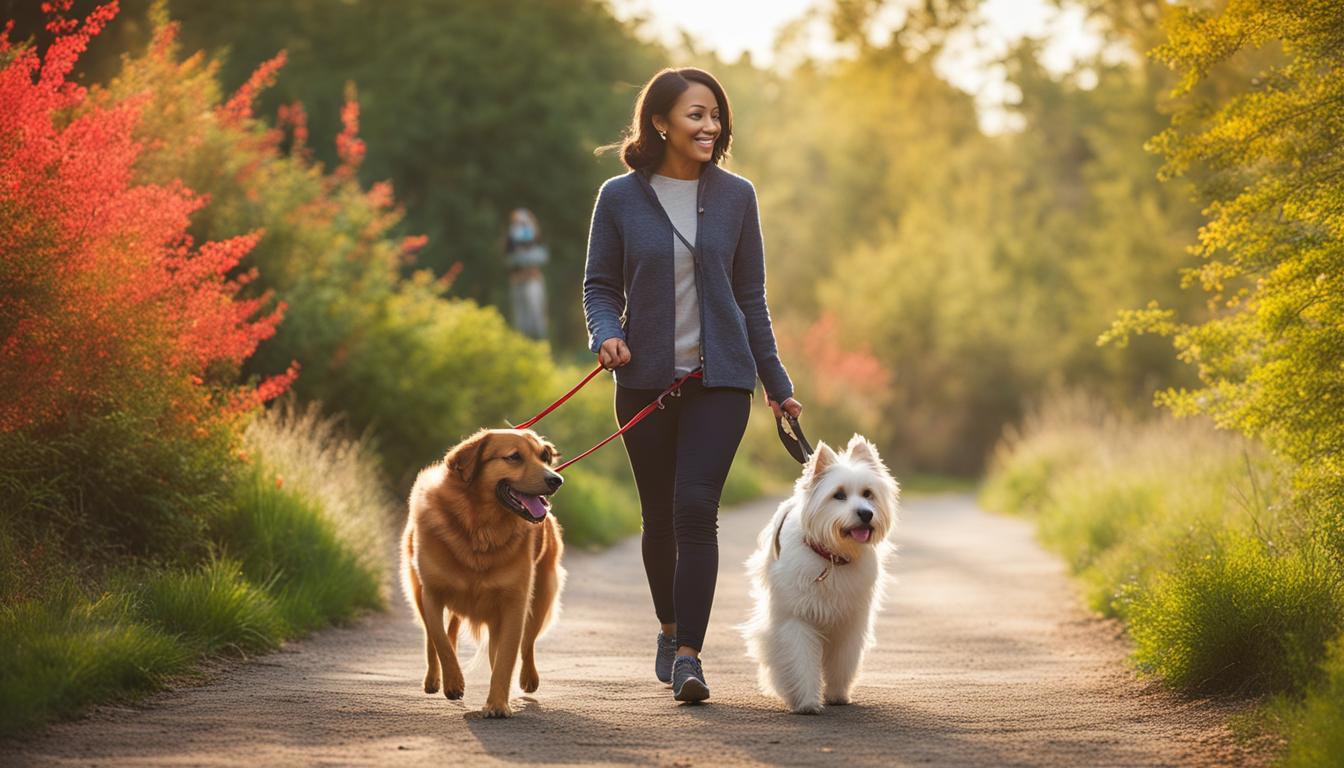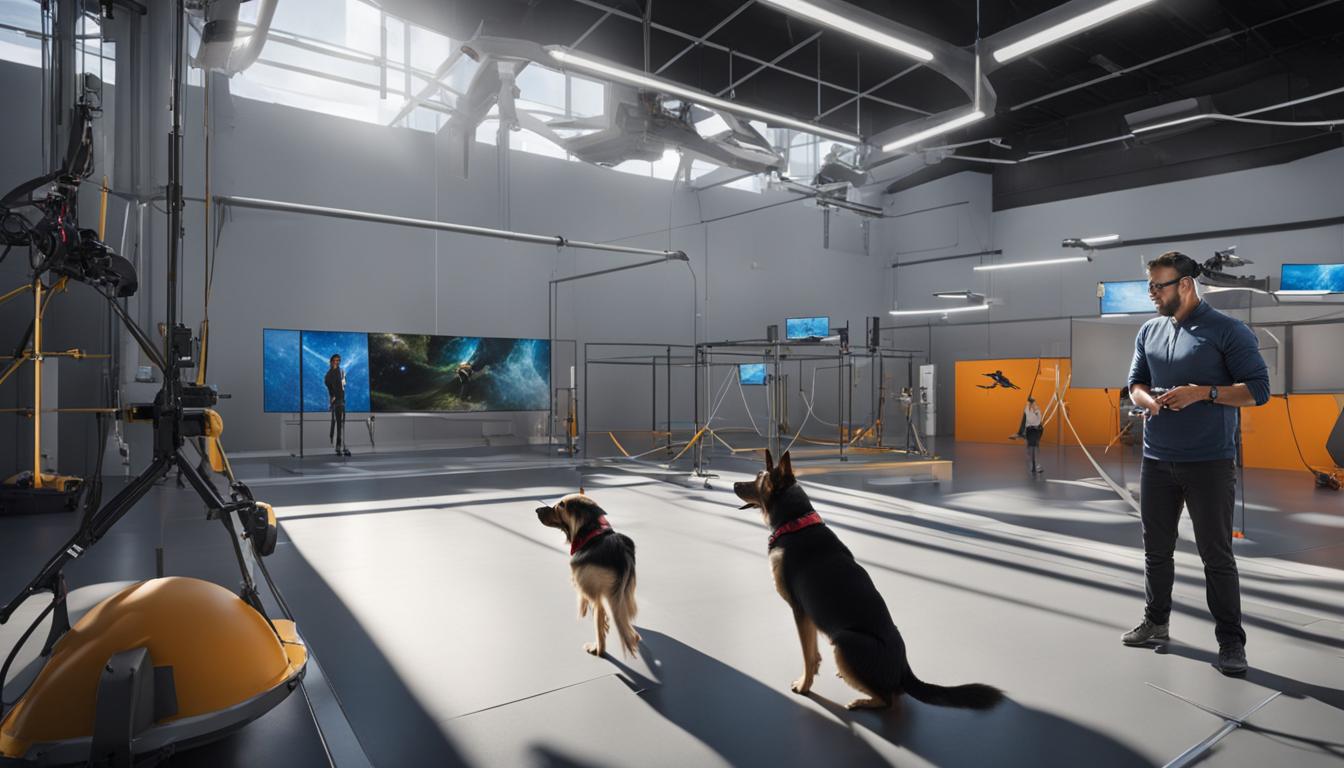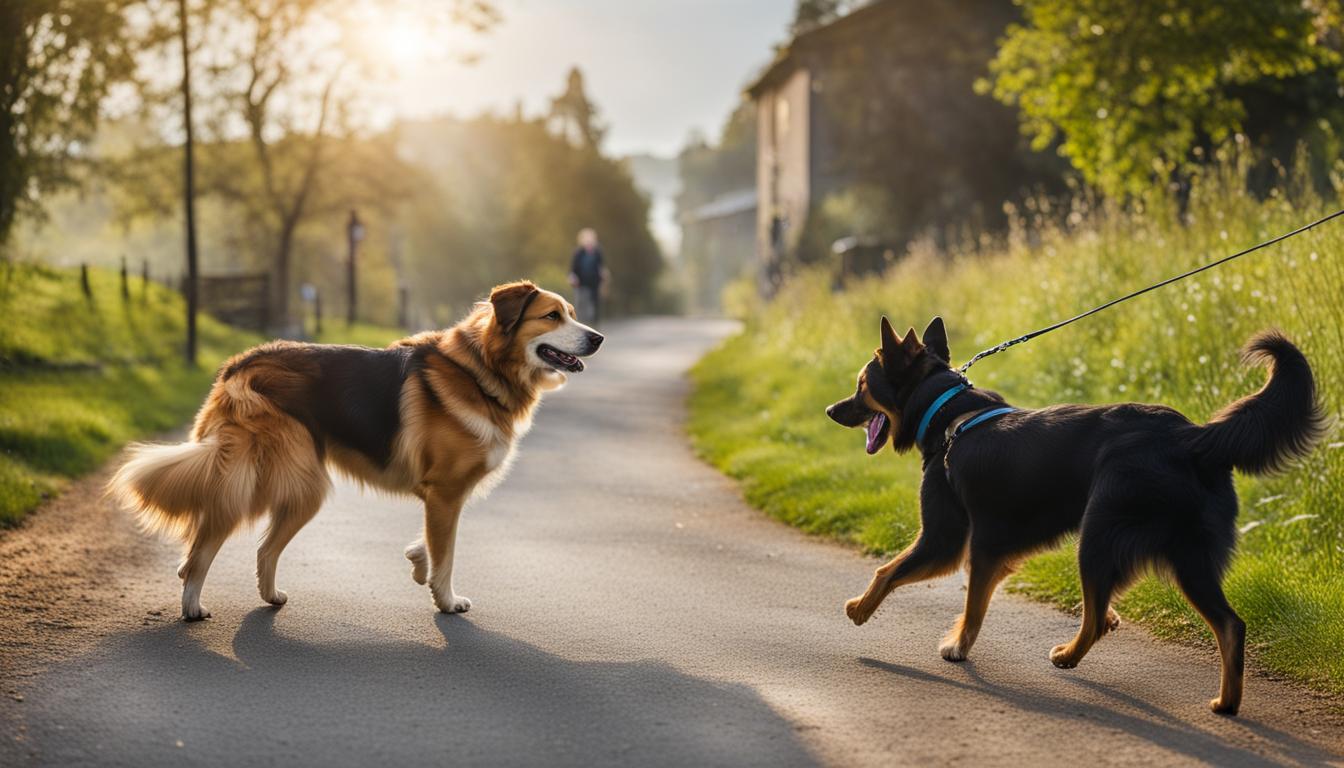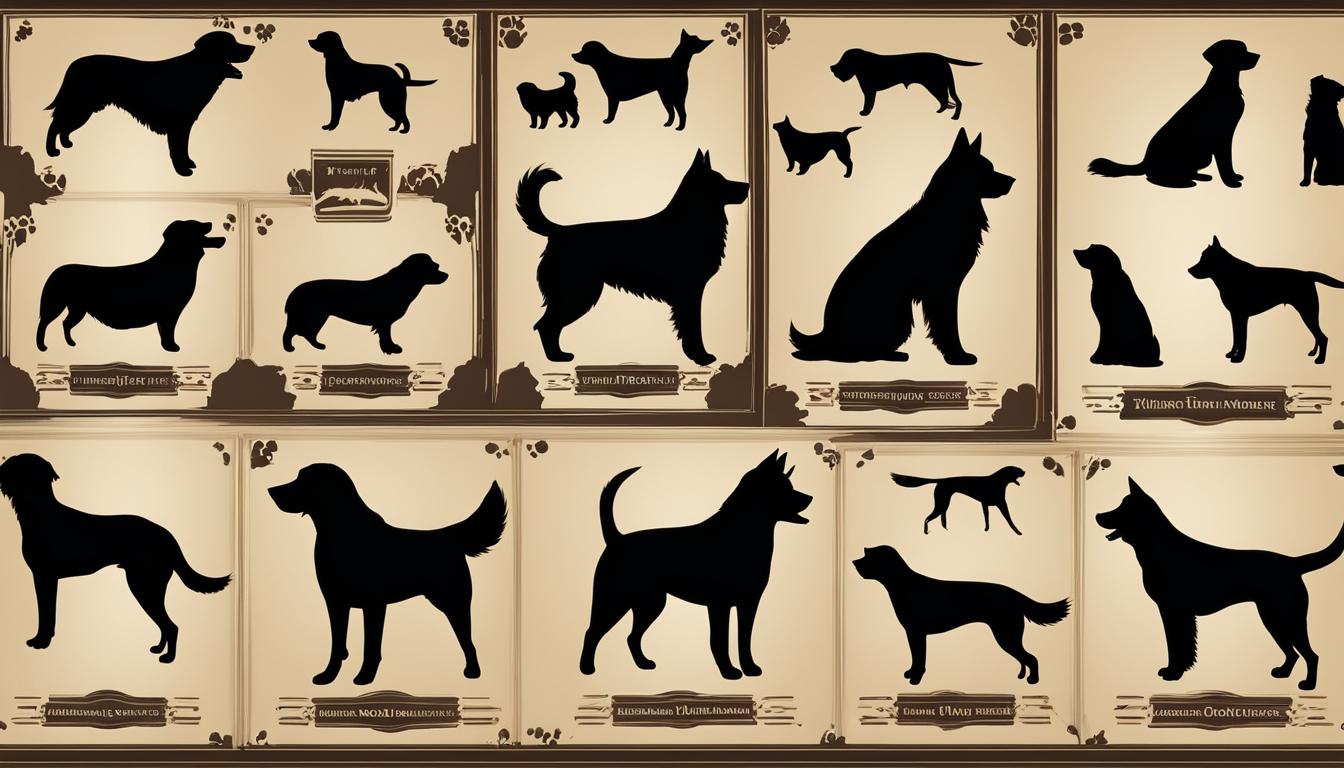Does your dog become reactive and uncontrollable when on a leash? Leash aggression is a common issue faced by dog owners, but the good news is that there are effective solutions to help you and your furry friend have a pleasant walking experience.
Lack of socialization, fear, frustration, and prey drive are some of the factors that can contribute to leash aggression in dogs. But don’t worry, with the right training and techniques, you can prevent and address this behavior to enjoy peaceful walks with your canine companion.
Key Takeaways:
- Socialization is key to preventing leash aggression in dogs.
- Desensitization and counter-conditioning techniques can help change your dog’s reaction to triggers.
- Focus training and basic obedience commands redirect your dog’s attention and promote calm behavior on a leash.
- Use positive reinforcement to reward and reinforce calm behavior.
- Be patient, consistent, and avoid punitive measures to achieve success in overcoming leash reactivity.
Understanding Leash Aggression in Dogs
Leash aggression is a common problem that many dog owners face. It occurs when a dog becomes reactive and aggressive while on a leash. Understanding the causes and signs of leash aggression is crucial in addressing this behavior effectively.
Causes of leash aggression can vary from dog to dog. Some common factors include lack of socialization, fear, frustration, and prey drive. Dogs that have not been exposed to different environments, people, and animals may feel anxious and defensive while on a leash. Additionally, fear and frustration can also contribute to leash aggression. It is important to identify the specific triggers that cause your dog’s leash aggression in order to address them properly.
Signs of leash aggression can manifest in different ways. Some dogs may bark, growl, or lunge at other dogs or people while on a leash. They may also exhibit signs of fear such as cowering, keeping their ears back, or attempting to escape. Lip tension and excessive shyness or fearfulness can also be indicators of leash aggression. Recognizing these signs can help you take appropriate steps to manage and train your dog.
Signs of Leash Aggression:
- Barking and growling
- Lunging or pulling on the leash
- Keeping ears back
- Attempts to escape
- Lip tension
- Excessive shyness or fearfulness
Causes of Leash Aggression:
- Lack of socialization
- Fear
- Frustration
- Prey drive
Understanding leash aggression and its underlying causes is the first step towards helping your dog overcome this behavior. By addressing the triggers and employing proper training techniques, you can work towards improving your dog’s leash behavior and creating a more positive and enjoyable walking experience.
| Signs of Leash Aggression | Causes of Leash Aggression |
|---|---|
| Barking and growling | Lack of socialization |
| Lunging or pulling on the leash | Fear |
| Keeping ears back | Frustration |
| Attempts to escape | Prey drive |
| Lip tension | |
| Excessive shyness or fearfulness |
Prevention and Early Intervention for Leash Aggression
Leash aggression is a common behavioral issue in dogs that can be prevented and addressed through early intervention and proper socialization. By focusing on prevention and addressing potential signs of leash aggression early on, pet owners can set their dogs up for success in their leash training journey.
Socialization plays a crucial role in preventing leash aggression. Starting socialization at an early age is key, exposing puppies to a variety of people, animals, and environments in a positive and controlled manner. Gradual exposure to different stimuli helps dogs build confidence and learn to remain calm in various situations.
Early signs of leash aggression should never be ignored. Promptly addressing these signs through desensitization and counter-conditioning techniques can make a significant difference in a dog’s behavior. Desensitization involves gradually exposing the dog to triggers while maintaining a safe distance, allowing them to develop a more positive association. Counter-conditioning focuses on changing the dog’s emotional response to triggers by associating them with positive experiences or rewards.
Remember, prevention and early intervention are fundamental when it comes to leash aggression. By prioritizing socialization and promptly addressing any signs of reactivity, pet owners can help their dogs develop positive leash behaviors and enjoy stress-free walks.
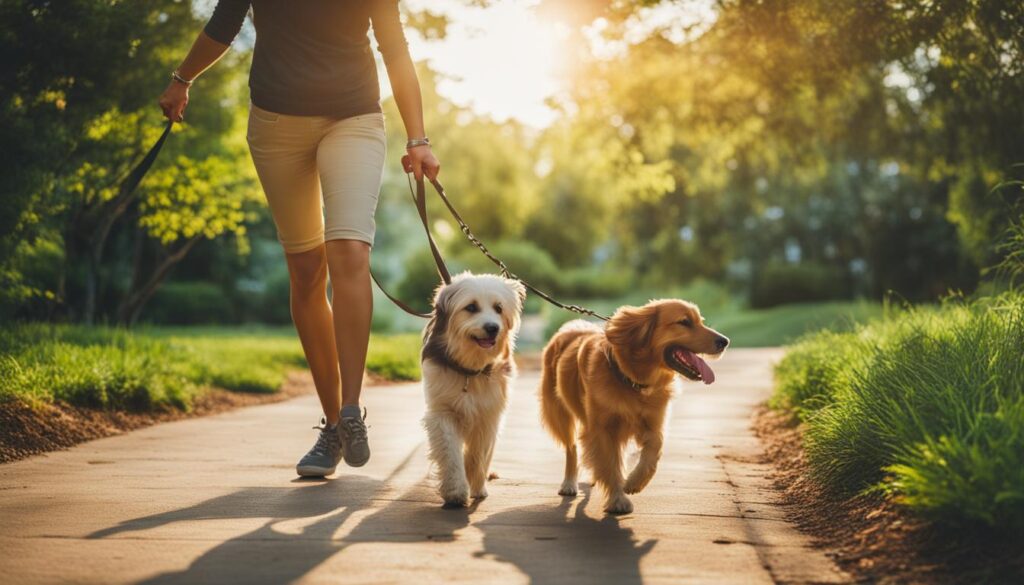
Techniques for Managing Leash Reactivity
Managing leash reactivity in dogs requires a combination of techniques that focus on desensitization, counter-conditioning, and training. These methods can help change your dog’s behavior and create a more positive and relaxed experience during walks. Let’s explore these techniques in more detail.
Desensitization for Leash Reactivity
Desensitization involves gradually exposing your dog to the triggers that cause their reactive behavior, starting from a distance that doesn’t trigger a reaction. As your dog becomes more comfortable, you can slowly decrease the distance. The goal is to help your dog associate the trigger with positive experiences, such as treats or play, rather than fear or aggression. This process requires patience and consistency, so it’s important to work at your dog’s pace.
Counter-Conditioning for Leash Reactivity
Counter-conditioning is another technique that can help change your dog’s emotional response to triggers. It involves pairing the presence of the trigger with something that your dog loves, such as their favorite treats or toys. By creating positive associations with the trigger, your dog will learn to feel more comfortable and relaxed in its presence. This technique requires repetition and consistency to be effective.
Focus Training for Leash Reactivity
Focus training can help redirect your dog’s attention away from triggers and towards you. Start by teaching your dog basic obedience commands, such as sit and stay, in a controlled environment. Once your dog has mastered these commands, you can gradually introduce distractions, such as the presence of triggers, during training sessions. By rewarding your dog for maintaining focus on you, you can help them learn to stay calm and composed in the presence of triggers.
| Technique | Description |
|---|---|
| Desensitization | Gradually exposing the dog to triggers at a low level and increasing exposure over time |
| Counter-Conditioning | Associating triggers with positive experiences to change the dog’s emotional response |
| Focus Training | Redirecting the dog’s attention towards the owner in the presence of triggers |
Remember, managing leash reactivity takes time and consistency. It’s important to work with a professional trainer or behaviorist who can guide you through the process and provide personalized advice for your dog’s specific needs. With patience, positive reinforcement, and the right techniques, you can help your dog overcome leash reactivity and enjoy walks together.
Tips for Walking a Leash Reactive Dog
Walking a leash reactive dog can be a challenge, but with the right approach, it is possible to have enjoyable walks together. Here are some tips to help you navigate this behavior:
1. Stay Prepared
When venturing out with your leash reactive dog, make sure to bring along high-value treats or their favorite toy as a distraction. These can help redirect their attention and keep them focused on you during encounters with triggers. Remember, positive reinforcement is key to shaping their behavior.
2. Be Vigilant
Stay watchful for potential triggers in the environment such as other dogs, cyclists, or loud noises. Being aware of your surroundings can help you anticipate and manage situations that might trigger your dog’s reactivity. When you spot a potential trigger, try maintaining distance to reduce your dog’s stress levels.
3. Use Calming Techniques
During walks, it’s important to remain calm and composed. Dogs can sense our emotions, so if you become tense or anxious, it may exacerbate their reactivity. Take deep breaths, maintain a relaxed posture, and use soft, soothing tones to help create a calming atmosphere for your dog.
4. Consider Management Tools
There are various management tools available that can assist in controlling your dog’s behavior during walks. Body harnesses and head collars can provide you with more control and help redirect your dog’s focus. However, it’s important to note that these tools should be used in conjunction with positive reinforcement training techniques and not as a substitute for proper training.
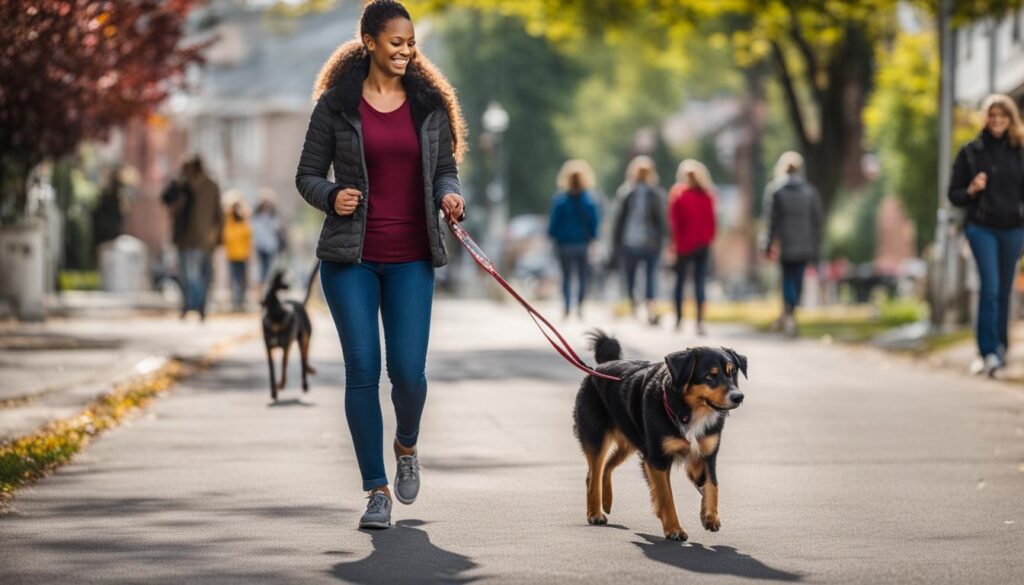
| Summary of Tips: |
|---|
| 1. Stay prepared with treats or toys as distractions. |
| 2. Be vigilant and aware of potential triggers in the environment. |
| 3. Use calming techniques to create a relaxed atmosphere. |
| 4. Consider using management tools alongside positive reinforcement training. |
Conclusion
Congratulations on taking the first step towards overcoming leash reactivity in your dog! Building confidence is essential in helping your furry friend feel more comfortable on walks. By implementing positive reinforcement techniques and consistent training, you can make significant progress in your leash training journey.
Remember, socialization plays a crucial role in preventing leash aggression. Gradually exposing your pup to different environments, people, and animals will help them feel more at ease. Additionally, desensitization and counter-conditioning can change their response to triggers by associating them with positive experiences.
Always keep in mind that patience is key. Leash reactivity may not disappear overnight, but with perseverance and a calm demeanor, you can make great strides. Avoid punishment and opt for positive reinforcement instead. Rewarding calm behavior will reinforce the desired response and strengthen the bond between you and your dog.
So, leash in hand, head out on your walks with confidence. With the right techniques and a little bit of time, you’ll soon be enjoying peaceful strolls with your well-behaved and leash-friendly companion. Good luck!
FAQ
What is leash aggression in dogs?
Leash aggression is a common behavioral issue in dogs where they exhibit unwanted behaviors such as barking, jumping, pulling, and growling while on a leash.
What causes leash aggression in dogs?
Leash aggression can be caused by factors such as lack of socialization, fear, frustration, and prey drive.
How can leash aggression be prevented and addressed?
Socialization is key in preventing and addressing leash aggression. Desensitization and counter-conditioning techniques can also be used to change the dog’s attitude towards triggers.
What is desensitization and counter-conditioning?
Desensitization involves gradually exposing the dog to triggers at a low level and increasing exposure over time. Counter-conditioning is used to associate triggers with positive experiences.
How can focus training help with leash reactivity?
Focus training can help redirect the dog’s attention and teach them to remain focused on their owner in the presence of stimuli.
What tips can help when walking a leash reactive dog?
Being prepared with high-value treats or toys as distractions, maintaining distance from triggers, and using management tools like body harnesses can help manage leash reactivity.
Is punishment effective in addressing leash aggression?
No, punishment can increase fear and reactivity. It is important to use positive reinforcement to reward calm behavior instead.
Can leash reactivity be overcome?
Yes, with the right techniques and training, leash reactivity can be successfully reduced. Building confidence through socialization and using positive reinforcement are key.

